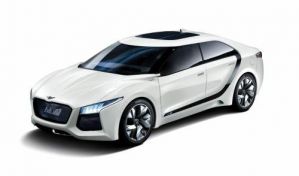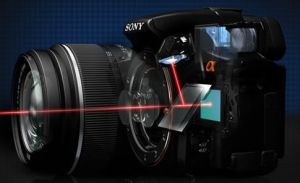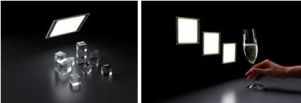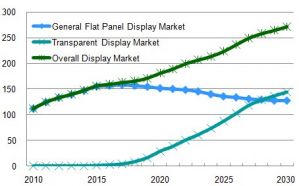Hyundai and Kia show new car concepts with transparent OLEDs
Both Hyundai and Kia unveiled new car concepts - and both use transparent OLED displays. Hyundai's car is called Blue2 and it's actually an update to the Blue-will concept car from 2009 (which also included a transparent OLED). The Blue-2 is powered by a 90kW (122PS/121bhp) fuel cell stack - delivering 34.9 km/liter. It has rear-view cameras, automatic door opening system. The main center console uses a transparent OLED and Gorilla glass. The infotainment system is operated with a haptic wheel and gesture controls.

Kia's new concept EV car is called Naimo (Korean for square). The car has no B-Pillars, rear doors that open up clamshell style and large (20-inch) wheels. On the inside Kia use Korean oak for the floors and a transparent OLED display behind the wheel. In fact the inside design is very similar to Kia's Pop concept from 2010. The car has an electric motor with a maximum output of 80kW (107hp). The battery is a 27kWh lithium ion polymer - giving a range of 124 miles. The battery has a fast-charge mode which can charge it up to 80% in 25 minutes. A full charge will take five and a half hours.









